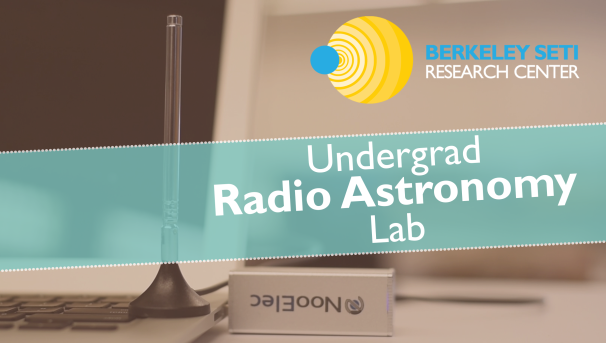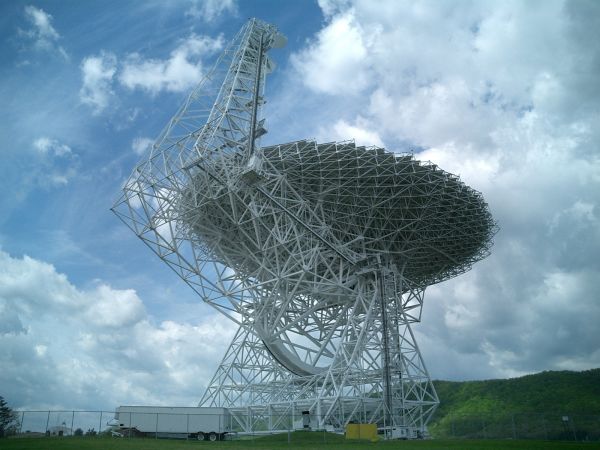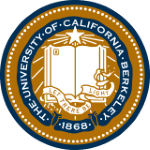This project is now in update mode. Check back regularly to see how things are progressing.
Berkeley SETI Research Center
This project has ended, but you can still support amazing Berkeley initiatives by visiting give.berkeley.edu. Your continued support of our students, faculty and staff will ensure that Berkeley remains the #1 public university. Go Bears!
Looking to the Sky
Humans have looked up at the sky for millennia and asked the question, "Are we alone?". But only recently have we begun to develop the capability to attempt to answer this question. UC Berkeley is a world leader in SETI, the Search for Extraterrestrial Intelligence, and the recent establishment of the Berkeley SETI Research Center (BSRC) has provided an increased focus for these efforts. BSRC researchers include the team behind SETI@home, one of the world's largest distributed computing projects, processing data from Earth's biggest radio telescopes in search of signals from intelligent civilizations around other stars.
The team at BSRC includes experts in building the digital hardware needed for the search. With the capability of scanning billions of channels and searching for signal types never before explored, these are like your car radio on steroids, hooked up to telescopes including one that's the largest movable structure ever built on land. We can scan the skies faster, with higher sensitivity, and tuning through more possible frequencies, than we could ever do before. But SETI is still seen as something of a fringe science by many. Sure, elementary schoolers across the world dream of searching for aliens, and Hollywood entertains millions with stories of civilizations inhabiting deep space. But we still suffer by association with the tin foil hat brigade, who post shaky videos of unidentified lights in the sky to YouTube, write polemics about how the government are hiding alien spacecraft at Roswell, and circulate kooky manuscripts about how ET built the pyramids. We want to change that, and a good place to start is to redouble our efforts to educate the next generation of SETI scientists and engineers.
Teaching the next generation
Currently we have eight undergraduate students working in our lab. They help us write software, plan and carry out our observations, and analyze our data. But we also want to give students hands-on training with the digital hardware that forms the basis of our instruments. Your donation will help us grow our undergraduate program, including purchasing new hardware that we’ll use to train additional students, helping us to develop curriculum materials for the next generation of SETI specialists. The students will gain skills that are useful in a range of 21st century careers in digital engineering and signal processing, and will be active participants in our exciting program as we search for life beyond Earth.

Members of our team have been doing SETI for 35 years, and while we haven't yet found a signal, we know that as we expand our capabilities to search, it gets more likely every day that we will find something. In the meantime, we feel privileged to be part of a small group of people working to try to find an answer to one of humanity's oldest questions. The technology we're developing in distributed computing, scalable computing architectures, and digital signal processing also have real-world applications that go far beyond SETI science. We want to share the excitement of the search and to engage and train the next generation who will continue to drive SETI forward as a serious scientific endeavor.

$10,000 would enable us to buy a variety of hardware to equip a digital SETI lab for undergraduates, to teach them how to design and build instrumentation for the next generation of SETI searches. This would include computers, antennas, adapters, and pay for time to help teach how to use the equipment and maintain the space.


Many scientists agree that we may be close to one of the most revolutionary results in the history of science - the detection of a signal from an alien civilization that may be eons more advanced than our own. Such is the excitement behind this endeavor that members of our group have been called to testify in the United States House of Representatives about the challenges and opportunities of the search.

We want to ensure that whenever that signal finally reaches, there will be a group of trained, dedicated scientists listening and watching the skies.

Contact Us

$25
Facebook Shout Out
We'll give you a personal shout-out and thanks on the Berkeley SETI Facebook page
$100
PDF Poster
Personal thanks on a PDF poster that we'll create and publish, thanking all our donors who give at this level or above.
$250
Forum Star
We'll create a special colored star associated with your user account on the forums at setiathome.berkeley.edu to identify you as a supporter.
$350
Ask a Question (Written)
Send us a question and get a personal response via email by a member of our team
$500
Roundtable Discussion
Attend roundtable discussion with BSRC Director Andrew Siemion (15 available)
$750
Ask a Question (Video)
Submit a question and have it answered by one of our team members in a fancy video.
$1,000
Acknowledgement in an Article
You'll be personally thanked in the next article the Berkeley SETI team has published in a scientific journal.
$2,000
Credit in a Video
We'll thank you as a supporter in the credits of one of our YouTube profile videos, and you'll get a shoutout from the scientist we interview.
$2,500
Tour Space Sciences Laboratory
A tour for the donor and one guest from one of our scientists of the Breakthrough Listen Lab and the Space Sciences Laboratory
$4,000
Supporter Plaque
We'll add your name to an official major supporters' plaque in the new Berkeley SETI lab
$10,000
Visit the Greenbank Telescope
Tour the Green Bank Telescope at the National Radio Astronomy Observatory in West Virginia for the donor and up to three guests (donor pays for flights and accommodation)






